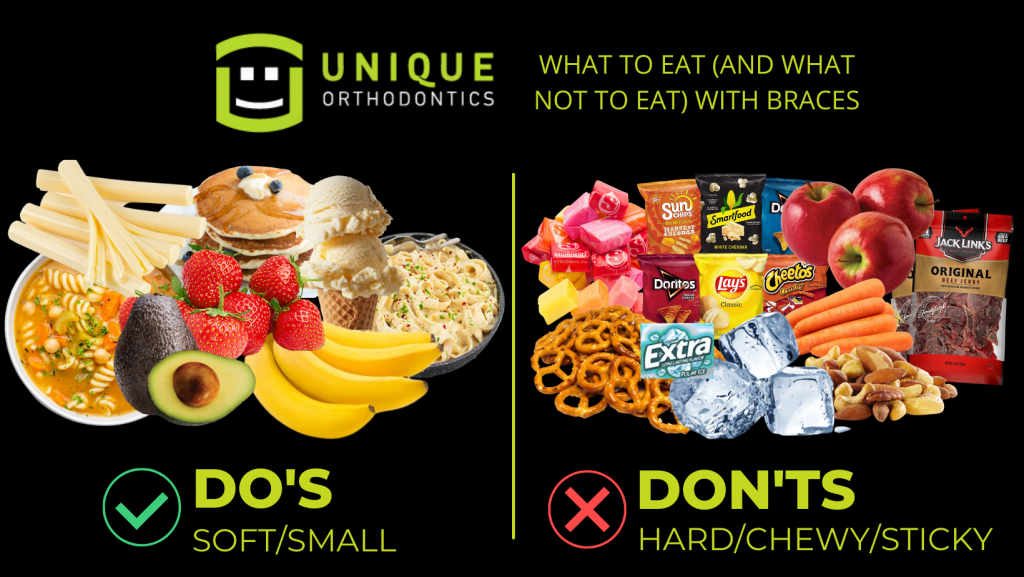
A diet rich in fruits and vegetables can help reduce inflammation. At least nine portions of these foods should be eaten each day. You should also eat fresh fruit, particularly those rich in antioxidants like strawberries. Whole grains are important, but rice noodles should be limited to only a few times per week. Baking flour is not considered an anti-inflammatory diet. These foods will make you feel more energetic and reduce inflammation.
If you want to choose a diet that promotes health, eat green leafy veggies. This will help reduce inflammation and increase the intake of omega-3 oils. Organic meat and dairy products are also options. Opt for omega flax and fish oil as dietary oils. For hydration, make sure to drink eight glasses of water every day.
Consuming whole foods is another good way to fight inflammation. Eat foods that are low in sugar. The best foods to eat are fruits and vegetables. For a healthy diet, low-fat dairy products, nuts and seeds, as well as olive oil, are all great options. For flavoring your food, herbs and spices are also a great option. Your body may be less reactive if you add vitamin E or antioxidants to your food.

While there is no cure of inflammation, there may be things you can do. You should eat lots of fresh fruits and vegetables and avoid sugary and processed foods. It is also important to include some fatty fish and coconut oil in your diet. Consuming these foods will help you be healthier and less likely cause inflammation. If you want to have more anti-inflammatory foods in your diet, you can check out EverlyWell's vitamin D and high sensitivity CRP test kit.
Although there are no scientific studies to support this particular argument, there is strong evidence to suggest that reducing inflammation is a good idea in many cases. It can help prevent chronic diseases like cancer and heart disease. Inflammation is an inherent part of our bodies. It is a natural, healthy response that protects us against harm. Changes in diet can help to reduce inflammation. You can lower your risk of developing chronic diseases by following these guidelines.
Your health is dependent on what foods you consume. Quercetin, which blocks the production of histamines in onions, is rich in quercetin. Anthocyanins, which are found in berries, help to reduce inflammation. While this isn't an anti-inflammatory diet, you can choose foods high in flavones and other anti-inflammatory compounds. Include whole grains, berries and fruits in your diet.
Many factors can cause inflammation. Chronic inflammation is caused by many factors including excess weight, poor sleep and pollution. Consuming healthy, balanced food with lots of water and antiinflammatory foods can help lower your risk of developing chronic inflammation. It's important to take the time to eat a healthy diet to keep your body well-balanced. Including anti-inflammatory foods in your diet will help keep your body functioning in a normal state.

Your body can become inflamed for many reasons. If your body doesn't have the ability to fight inflammation, it can lead to chronic pain and ear infections as well as cancer. Blueberries and leafy leaves are rich in polyphenols which can help reduce inflammation. These anti-inflammatory compounds may also protect your health. A healthy diet, along with adequate sleep, can help you improve your health.
Chronic inflammation is often caused by chronic inflammation. Chronic inflammation is a major factor in many chronic health conditions. Although inflammation is a natural bodily reaction to injury, it can lead to many problems. Consuming a high amount of refined carbohydrates can lead to inflammation. Sugary drinks, for example, can be detrimental to your health. They can cause symptoms such as joint pain, fatigue, swelling, and even death. They can also encourage the growth of cancer and other cardiovascular diseases.
FAQ
What are 10 healthy habits?
-
Every day, eat breakfast.
-
Don't skip meals.
-
Be balanced.
-
Drink plenty of water
-
Take care your body.
-
Get enough sleep.
-
Avoid junk food.
-
Do some form of exercise daily.
-
Have fun!
-
Make new friends.
What is the best way to live a healthy lifestyle?
Healthy lifestyles include eating healthy food, regular exercise, good sleep, and avoiding stress. This will ensure that you live a long healthy life.
You can start by making small changes in your diet and exercise routine. For example, if you want to lose weight, try walking for 30 minutes every day. You can also take up dancing or swimming if you are looking to be more active. You could also join an online fitness program like Fitbit or Strava that tracks your activity levels.
What is the difference of a virus from a bacteria?
A virus is a microscopic organism which cannot reproduce outside of its host cell. A bacterium (or single-celled organism) reproduces by splitting itself into two. Viruses are small, around 20 nanometers in size. Bacteria are much larger, at 1 micron.
Viruses are spread via contact with infected bodily liquids such as urine, saliva, semen and vaginal secretions. Bacteria is usually spread directly from surfaces or objects contaminated with bacteria.
Viral infections can also be introduced to our bodies by a variety of cuts, scrapes or bites. They can also enter the body through the mouth, nose, eyes and ears, vaginal, rectum or anus.
Bacteria can be introduced to our bodies by cuts, scrapes or burns. They can also enter our bodies from food, water, soil, dust, and animals.
Both viruses and bacteria can cause illness. Viruses can not multiply within the host. Viral infections can only cause diseases in living cells.
Bacteria may spread to other people and cause sickness. They can spread to other parts of our bodies. Antibiotics are needed to eliminate them.
How often should i exercise?
It is important to exercise for a healthy lifestyle. However, there isn't a set amount of time you must spend working out. It is important to find something that you enjoy and stay with it.
If you work out three times a week, then aim to complete 20-30 minutes of moderate intensity physical activity. Moderate intensity means that your muscles will continue to work hard even after you finish. This type works out burns around 300 calories.
Walking is a great option if you are a keen walker. You can do 10-minute walks four days per week. Walking is low impact and easy on your joints.
Jogging is an alternative to running. You can do it for as little as 15 minutes each day. Running is a great way of burning calories and building muscle tone.
Begin slowly if your are not used to working out. Begin with 5 minutes of cardio every other day. Gradually increase duration until you achieve your goal.
Statistics
- According to the 2020 Dietary Guidelines for Americans, a balanced diet high in fruits and vegetables, lean protein, low-fat dairy and whole grains is needed for optimal energy. (mayoclinichealthsystem.org)
- Extra virgin olive oil may benefit heart health, as people who consume it have a lower risk for dying from heart attacks and strokes according to some evidence (57Trusted Source (healthline.com)
- According to the Physical Activity Guidelines for Americans, we should strive for at least 150 minutes of moderate intensity activity each week (54Trusted Source Smoking, harmful use of drugs, and alcohol abuse can all seriously negatively affect your health. (healthline.com)
- The Dietary Guidelines for Americans recommend keeping added sugar intake below 10% of your daily calorie intake, while the World Health Organization recommends slashing added sugars to 5% or less of your daily calories for optimal health (59Trusted (healthline.com)
External Links
How To
What does "vitamin" actually mean?
Vitamins can be described as organic compounds found in food. Vitamins allow us to absorb nutrients from food. Vitamins cannot come from the body so food must provide them.
There are two types vitamins: water soluble or fat soluble. Water-soluble vitamins dissolve easily when they are dissolved in water. Vitamin C,B1(thiamine), B2 (2riboflavin), and B3 (3niacin), as well as vitamin C,B1, B2 (riboflavin), and B3 (niacin), vitamin B6 (pyridoxine), vitamin folic acid (biotin), pantothenic, and choline are examples. The liver and fat soluble vitamins are stored within the liver and in fatty tissue. Examples include vitamin D, E, K, A, and beta carotene.
Vitamins are classified based on their biological activity. There are eight major vitamin groups:
-
A - Essential for healthy growth and health maintenance.
-
C - essential for nerve function and energy generation.
-
D - necessary for healthy bones and teeth.
-
E is needed for good reproduction and vision.
-
K - essential for healthy muscles, nerves, and bones.
-
P – vital for building strong bones.
-
Q - Aids digestion and iron absorption
-
R - necessary for making red blood cells.
The recommended daily allowance (RDA), for vitamins, varies depending upon age, gender, or physical condition. RDA values are set by the U.S. Food and Drug Administration (FDA).
For example, the RDA for vitamin A is 400 micrograms per dayfor adults 19 years or older. For fetal development, pregnant women need 600 mg per day. Children ages 1-8 require 900 micrograms per day. For infants younger than one year, 700 micrograms are required daily. However, this number drops to 500 micrograms each day for children aged 9-12 months.
Children between the ages of 1-18 need 800 micrograms per daily for obesity, while children overweight require 1000 micrograms. Children underweight or obese will need 1200 mg per day.
Children 4-8 years old who have anemia must consume 2200 micrograms of Vitamin C daily.
2000 micrograms are required daily for good health in adults over 50. Mothers who are pregnant, nursing, or have a high nutrient need will require 3000 micrograms a day.
Adults over 70 need 1500 micrograms daily, as they lose 10% of their muscle every ten years.
Women who are pregnant and lactating need more nutrients than the RDA. Pregnant and breastfeeding women require 4000 micrograms each day during pregnancy and 2500 Micrograms each day after delivery. Breastfeeding moms need 5000 micrograms each day when breastmilk production occurs.